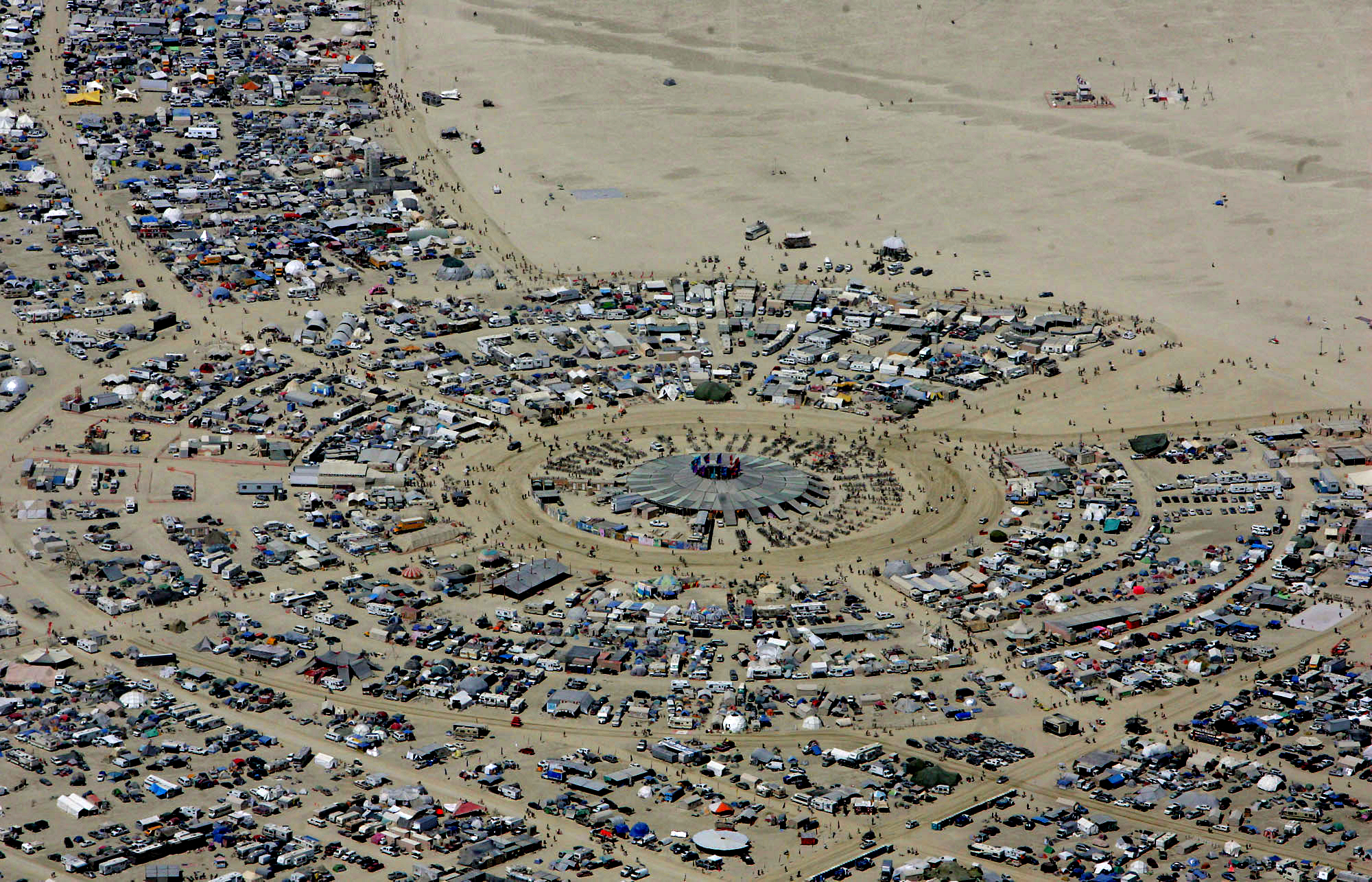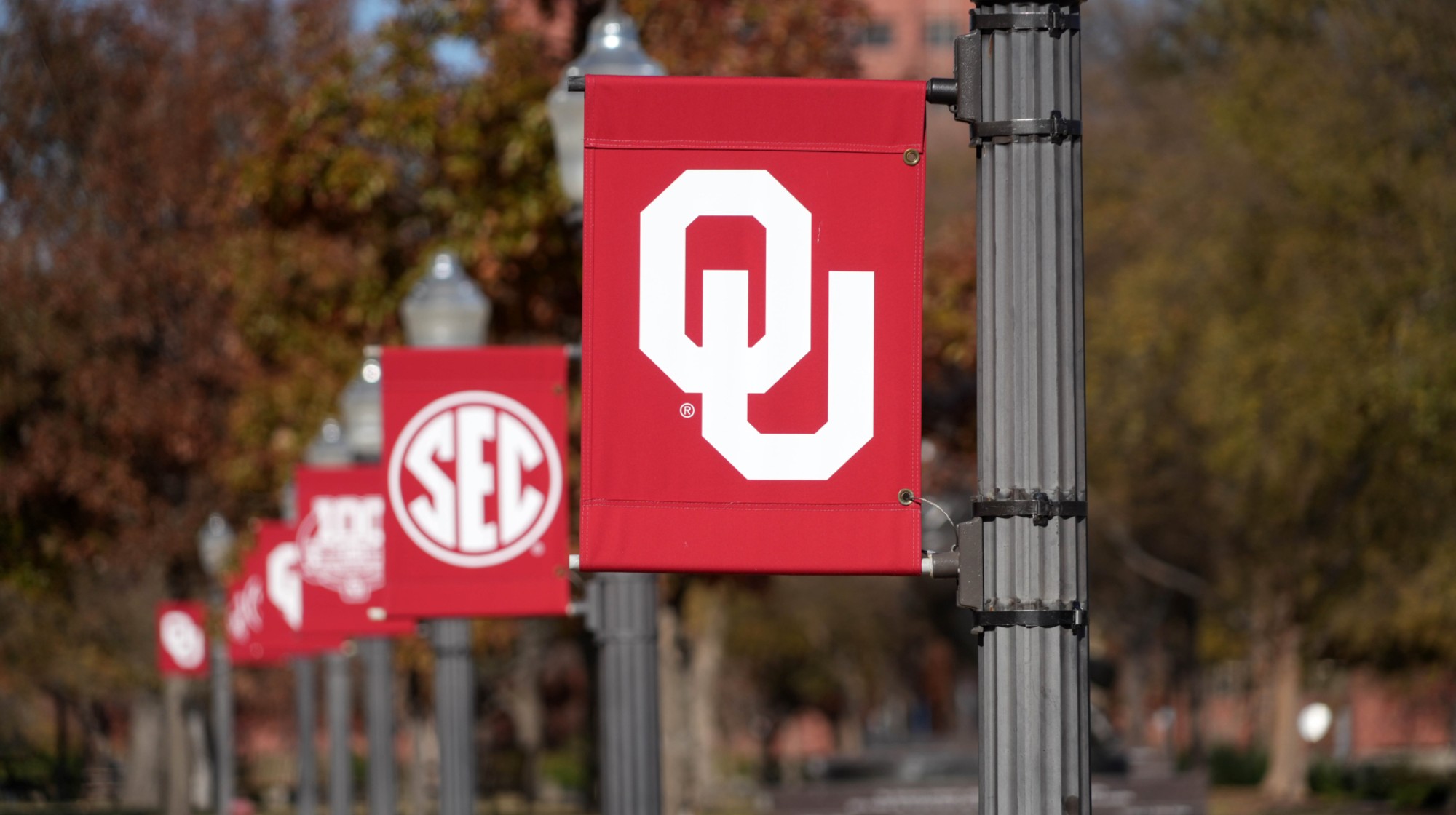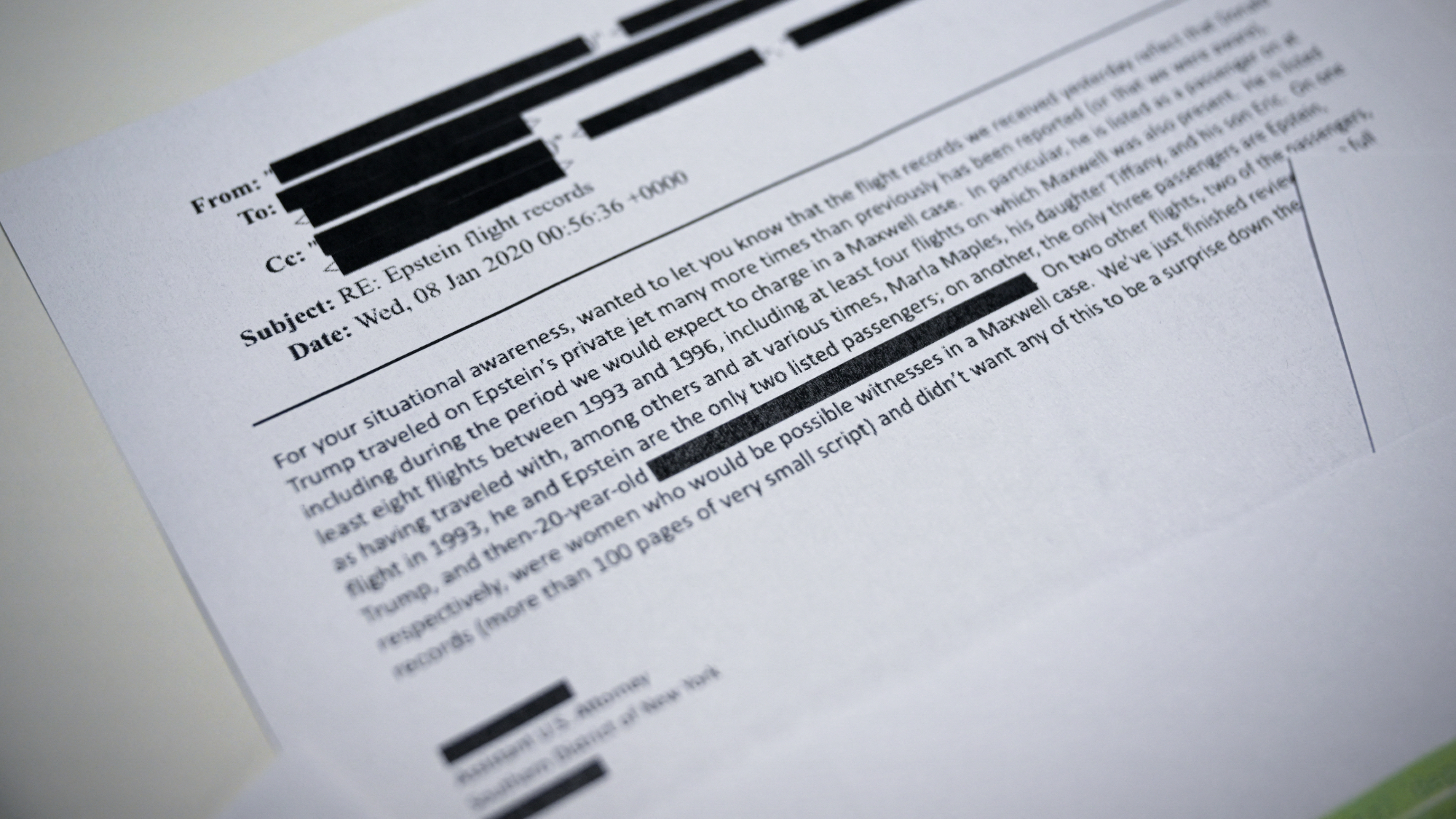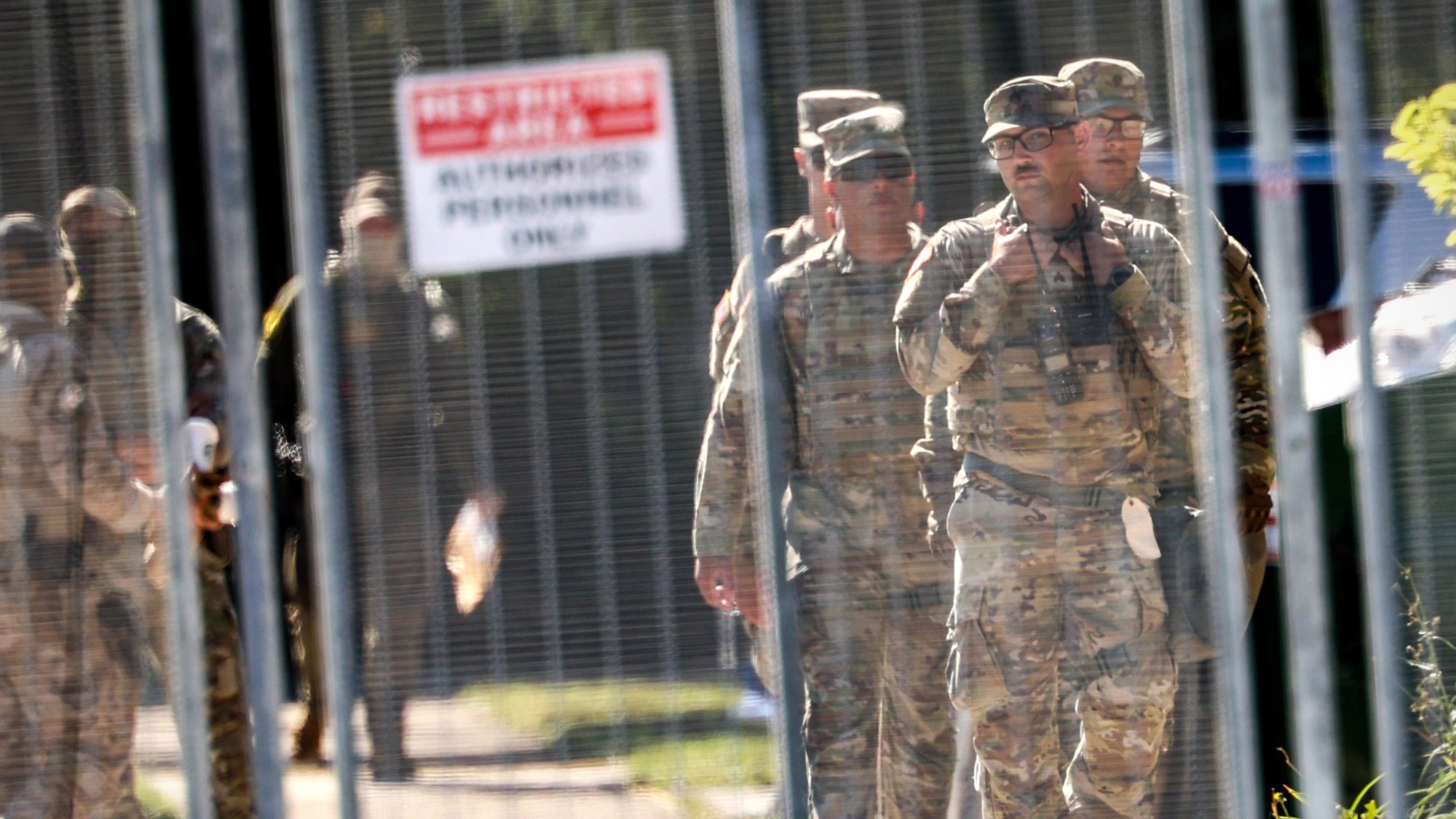Is Burning Man the city of the future?
A Nobel laureate economist thinks well-designed cities are the key to the future. He found a model in a 70,000-person city built in three weeks in the Nevada desert.

A version of this story originally appeared in The New York Times. Used with permission.
It was dusk on the opening night of Burning Man, and the makers and misfits were touching up their art projects and orgy dens. Subwoofers oontz-oontzed as topless cyclists draped in glowing LEDs pedaled through the desert. And Paul Romer, a reigning laureate of the Nobel Memorial Prize in Economic Sciences, sat on a second-story porch at the center of it all, marveling at a subtlety of the street grid.
The roads narrowed as they approached small plazas around the impermanent city. How clever, he thought, this way of funneling pedestrians toward gathering places. And most Burners probably didn't even notice — what with the art projects and orgy dens.
The Week
Escape your echo chamber. Get the facts behind the news, plus analysis from multiple perspectives.

Sign up for The Week's Free Newsletters
From our morning news briefing to a weekly Good News Newsletter, get the best of The Week delivered directly to your inbox.
From our morning news briefing to a weekly Good News Newsletter, get the best of The Week delivered directly to your inbox.
"It's just like every other city," Romer said. "Except in this other way, it's like no city ever." White-haired and 63, he was dressed in black gear he'd bought at REI, figuring black was the thing to wear at Burning Man. It was the first time that Romer, former chief economist of the World Bank, had attended the annual bacchanal.
A week earlier, there was hardly anything here, in the remote desert of northwest Nevada. Then tens of thousands of people had just shown up, many in the middle of the night. They had formed an instant city, with a road network, and a raucous street life, and a weird make-do architecture.
It was an alluring sight for an economist who has talked of building cities from nothing. And Burning Man has been more and more on Romer's mind lately, as world politics have made him gloomier. He is ill at ease behaving like a traditional academic. He's not particularly interested in publishing papers. He doesn't want to give speeches cheerleading his field. But he believes winning the Nobel has expanded his possibilities. More people will listen to what he has to say, if he can just decide where he wants to direct our attention.
Maybe it's here.
A free daily email with the biggest news stories of the day – and the best features from TheWeek.com
Romer came to the desert imagining himself as an objective outsider: de Tocqueville among the Burners. But Black Rock City started to rub off on him. One morning, a man who called himself Coyote, who was responsible for surveying the city's streets, took Romer around. At the far edge of town, they found a roller coaster that looked likelier than most things at Burning Man to harm you. It was designed for one fool at a time, strapped into an oversized car seat that shot down one side of a 31-foot wooden U shape and up the other.
Romer, surprising himself, walked up to it.
"Should I do this?" he asked Coyote. "If you kill a Nobel Prize winner, it's on you."
Then he climbed the stairs to the top of a contraption that had been constructed just days before, in a city with no building codes. Heavy metal was blaring. Romer was trussed into place. A guy with "PEE HERE" painted on his back took his glasses. And then someone gave him a push.
Wild territory for a staid academic
Burning Man, to catch up the uninitiated, takes place for a week in the Nevada desert every August into early September. Thousands of avant-garde revelers come to bend their minds, shed their clothes, and incinerate a large wooden effigy. The event is tamer than it used to be, with more Silicon Valley types and fewer anarchists, but it's still wild territory for a staid academic.
Romer, who appreciates a bit of shock value, has been showing aerial images of the city in public talks about urban growth for several years. The world, he said, needs more "Burning Man urbanization."
By 2050, developing-world cities are projected to gain 2.3 billion people. Many of those people will move to makeshift settlements on the edge of existing cities, tripling the urbanized land area in the developing world.
"To be a little grandiose about it, this is a really unique moment in human history," Romer told me last year. "We're likely to decide in this time frame what people are going to live with forever."
Urbanization in the developed world has largely come to an end; nearly everyone who would move from farmland toward cities already has. This century, the same mass migration will run its course across the rest of the world. And if no one prepares for it — if we leave it to developers to claim one field at a time, or to migrants to make their way with no structure — it will be nearly impossible to superimpose some order later.
It will take vast expense, and sweeping acts of eminent domain, to create arterial roads, bus service, trash routes, public parks, basic connectivity.
That prospect agitates Romer, because the power of cities to lift people out of poverty dissipates when cities don't work. To economists, cities are labor markets. And labor markets can't function when there are no roads leading workers out of their favelas, or when would-be inventors never meet because they live in gridlock.
Romer's answer is to do with this moment what Burning Man does every summer: Stake out the street grid; separate public from private space; and leave room for what's to come. Then let the free market take over. No market mechanism can ever create the road network that connects everyone. The government must do that first.
The history of the Manhattan street grid, drawn in 1811 over all the land from Houston Street to 155th, offers similar lessons. But Romer fears that Manhattan sounds like a chauvinistically American example. And so when skeptics say that it will be too hard to plan for large new waves of urbanization, he says this instead: "Look at Burning Man! They grow to 70,000 people in one week."
And then 70,000 people go home, and they do it all over again the next year. The planning requires no major expense, he argues. He's not talking about laying sewer lines, or even paving the roads. Just draw the street grid on the open desert.
When he first proposed this to me — Burning Man as template for the next urban century — I asked if he had ever, well, been to Burning Man.
He had not. And so we made two trips there in August: first to see the city surveyed, then a few weeks later to camp in it. He would see firsthand if his provocative argument held up.
Romer's logic is connected in a roundabout way to the work that won him the Nobel. Macroeconomists used to think about the world by tallying up quantifiable stuff: capital, labor, natural resources. They weren't sure how to account for ideas. But Romer, in a seminal 1990 paper, showed that ideas were central to progress. His model of economic growth incorporating ideas enabled economists to ask entirely new questions about the modern "knowledge economy": Where do ideas come from? How do they spread? Why are cities such hotbeds for creating them?
By the late aughts, Romer was sure that cities were the urgent subject of the 21st century. He had a new idea: "charter cities" that would be built in the developing world but governed by nations with more advanced economies and more rules protecting, say, property rights and independent judges. He was picturing British-era Hong Kong, replicated 50 times over.
Some developing-world politicians were intrigued. Critics cried neocolonialism. Libertarians largely misread Romer's intentions: They saw new territory where capitalists could shrug off government rules. To Romer, the idea was about seeding the right government rules.
The proposal forced Romer to learn the mechanics of cities. He persuaded NYU to create a new institute devoted to them, and two planning experts gave him an education. Shlomo Angel taught him the foundation of good street grids. Alain Bertaud gave him a framework: Urban planners design too much, while economists cede too much to the market. The answer lies in between — in drawing the street grid on the desert.
"The beauty of the mind of Paul is that he sees patterns where we don't see them, because he sees patterns across examples which have nothing to do with each other," Bertaud said.
Romer looked at the Manhattan street grid, the imagined charter city, Black Rock City. He was doing this even in his short tenure at the World Bank, where he worked from 2016 to early 2018. He took the job quietly hoping to persuade the institution to back a new city. (It did not.)
In all of this, Romer has been creeping further from economists and toward urban planners. By the time he got to Burning Man in August, he was thinking of himself as a University of Chicago-trained economist, once indoctrinated in the almighty free market, now in open revolt against his roots.
Anarchy doesn't scale!
Burning Man is an even better model for Romer's purposes than he knew. The event began in 1986 as a rejection of rules: There was no central authority, no prohibitions, no assigned camping spots.
In the early years on the Black Rock Desert, after the event outgrew Baker Beach in San Francisco, people brought fireworks and guns. They raced through the desert night with headlights off. They fired hunting rifles from moving vehicles at vacant cars.
"A lot of people — and I was one of them — thought that Burning Man was about this crazy feeling you could have, being with really creative people that are all anarchists, and there is no order, and it's just amazing what can come out of that," said Harley Dubois, who attended those early years. "And what came out of that was some people getting hurt."
In 1996, a man on a motorcycle playing chicken with a large vehicle was killed. Then a rave set up 2 miles north of the main camp got out of hand. Three people inside tents were run over and seriously injured.
The Bureau of Land Management kicked the event off public land. Longtime participants split over whether a more organized Burning Man could be Burning Man at all.
Today, the event's six "founders" are the people who reconstituted Burning Man after 1996, including Dubois. The anarchists drifted away. And the founders created a street grid, an early version of what would become a semicircular city with all arterial roads converging on a giant, flammable male figure in the center.
They "invented a sense of superordinate civic order — so there would be rules, and structure, and streets, and orienting spaces, and situations where people would feel a common purpose together; where people could become real to one another," Larry Harvey, one of the founders, recounted in an oral history before his death last year.
"It had gone beyond a bit of pranksterism in the desert," he said. "We had made a city, and no one wanted to take responsibility for it."
To Romer, this was a teachable moment. "Anarchy doesn't scale!" he said.
Most of the structure that has been added since feels invisible to the people who come: the streets that are surveyed to be exactly 40 feet wide, the plazas that steer people together without crowding them, the 430 fire extinguishers around town, each tracked by its own QR code.
The goal now, one planner explained to Romer, is to make Black Rock City just safe enough that people can joke about dying without actually dying.
"It's a metaphor for my sense of economics," Romer said. "I picture an economist showing up at Burning Man and saying: 'Oh, look! This is the miracle of the invisible hand. All of this stuff happens by self-interest, and it just magically appears.' And there's this huge amount of planning that actually is what's required beneath it to make the order emerge."
On this point, the economist and the Burners kept converging: Freedom requires some structure, creativity some constraints. But it was becoming clear there was more to the structure and constraints at Burning Man than Romer imagined. As he learned that, he inched even further toward the urban planners.
After 1996, the founders also began putting up a fence around the city, a pentagon with perfectly straight sightlines. Nominally, it is a "trash fence," catching debris before it blows into the desert. But it also defines the edge of the city, so that it is possible to stand at the boundary line and stare out into an open desert uncluttered by tents or plywood art. The fence is an urban growth boundary. It is as much about keeping out interlopers as keeping people in.
The market is the danger
The Black Rock Desert is one of the flattest places on earth. The land demands that you drag race. It is the perfect setting to shoot off rockets. The desert then returns any mischief right back, playing tricks on people who come.
Three weeks before Burning Man began, Romer and I drove 100 miles north from Reno to the tiny nearby town of Gerlach, then 15 more miles north onto the parched mud of the playa, arriving, at last, at precisely the spot in the middle of nowhere where the man statue would stand.
Over the city's center point, Coyote had set up a theodolite, a surveying instrument he used to locate 6,000 small red flags that marked the city's street grid. The flags made their own mirage of disorder in every direction. But if you caught them at just the right angle, future streets came into view.
It had taken a crew of about 20 people, sleeping under the stars, a week to survey the city. "I wake up in the middle of the night, and I'm staring into the Milky Way, and I realize that it's moved — oh wait, I'm the one who moved," Coyote said. "Some people come out here just for the survey."
When I had first explained this spring that I wanted to come out to the desert with a famous economist to see the parts of Burning Man people take for granted, no one was surprised. Two years ago, word of one of Romer's talks at the World Bank mentioning Black Rock City had found its way to people here. They were equally curious about him.
Romer's nerdy interest delighted everyone. He recited details of their city plan, photographed their traffic cones and accepted one of their wooden street pegs as if it were an honorary degree.
"I think they have some experience in doing this that's maybe unique in the world," he said the next day at dawn. He was watching a crew raise the trash fence, their pile drivers ringing like cowbells across the desert.
Romer was beginning to incorporate these characters into his thinking. What they do here is a model for any place with few resources but just enough volunteers to survey new neighborhoods on the urban periphery. But on a grander scale, if he ever persuades someone to build a new city, maybe the people to call are at Burning Man.
Before we left town on that first trip, we visited Will Roger and Crimson Rose, two other Burning Man founders who have a home in Gerlach. In their living room, Romer sat in a leather armchair opposite Roger. A lineup of small animal skulls looked over his shoulder from the shelf behind him.
Roger warned Romer that he had decided he didn't like cities. At least, not those in what he called the "default world," away from Burning Man.
"All the energy and the helter-skelter and lack of connection to the earth, the energy of all those humans compressed into one space implodes on my own spirit, on my own sense of who I am," Roger said.
This is a funny thing to say to an economist. Helter-skelter is a decent description of the force from which economists believe ideas emerge. When people live close to one another, rather than close to the land, they hatch plans, they trade services, they discuss terrible ideas until they eventually arrive at good ones.
This is more or less what happens at Burning Man, too. But other cities have become symbols of greed and consumption, Roger said. And that greed is killing our Earth Mother.
"I think I have some of the same anxieties, but I'm coming to the view that it's the market which is the danger, not the city," Romer said.
"I'm afraid economists have really been serious contributors to this problem. This whole ideology of 'government is bad, government is the problem' has I think provided cover for rich people and rich firms to take advantage of things for their selfish benefit."
He has been trying to figure out how to atone for that. As Romer's conversation with Roger took on the air of a therapy session, I got the impression that he had also come to the desert to work through his angst with economics.
Roger, sympathetic, poured him his first taste of kombucha.
Levi goes in for a hug
Three weeks after the survey, Romer and I returned. The dusty streets were now clearly defined as the space between what people had invented: at one intersection, a "passport office" for Burners who wanted to record their adventures around Black Rock City. On another corner, a troupe of fire performers from Canada was camped, and on another a half-dozen drivable pieces of art were parked. There was also a row of 36 portable toilets, and behind that, "Brand-UR-Ass N More," a camp where it was possible to get both a drink and a faux branding of the Burning Man logo.
While we were standing at the intersection, a man in a great beard and a blond wig approached with a hug. Levi, 35, was part of a camp running a 24-hour bar up the street, and we learned that he had lately been riding motorbikes across Africa but was about to apply to graduate school to study cognitive science.
Levi, who did not know whom he was talking to, mentioned to Romer that his hero was Daniel Kahneman, the 2002 winner of the Nobel in economic sciences.
"Well, I won the Nobel Prize last year," Romer said. "So Danny is a fellow laureate."
Levi's face lit up, and we then spent the next 45 minutes wandering around the neighborhood talking about economics and human behavior and scarcity. Nearly everything in Black Rock City is effectively free. But you're supposed to respond with some type of gift to the people around you: a piece of advice, a turn in a hammock, a hot dog.
At Levi's bar, we were given cups of something cold and orange and alcoholic. Romer, in a comparable act of generosity, then offered Levi his email address. He would happily write a recommendation for grad school, he said. Levi, floored, went in for another hug.
Theirs was exactly the kind of encounter that a city generates, over and over again, until someone gets into grad school, and someone else finds a job, and someone else begins to earn more than $2 a day.
In Romer's Nobel lecture, he implored people to think of cities, especially in the developing world, as places where people get the benefits of interacting with one another. A global economy built on ideas no longer has to be zero-sum, he argued. Everyone can use ideas at the same time. Someone living in America benefits if someone in India becomes better off and invents a vaccine.
But we have to make the cities viable first, in this moment when it's still possible to draw what they might become.
"If we take a pass on this," he warned, "the opportunity will be gone."
He did not mention Burning Man. But that was before he saw the place in person.


